QSA Silver Fuse and Silver Jitter AC adapter by Clement Perry
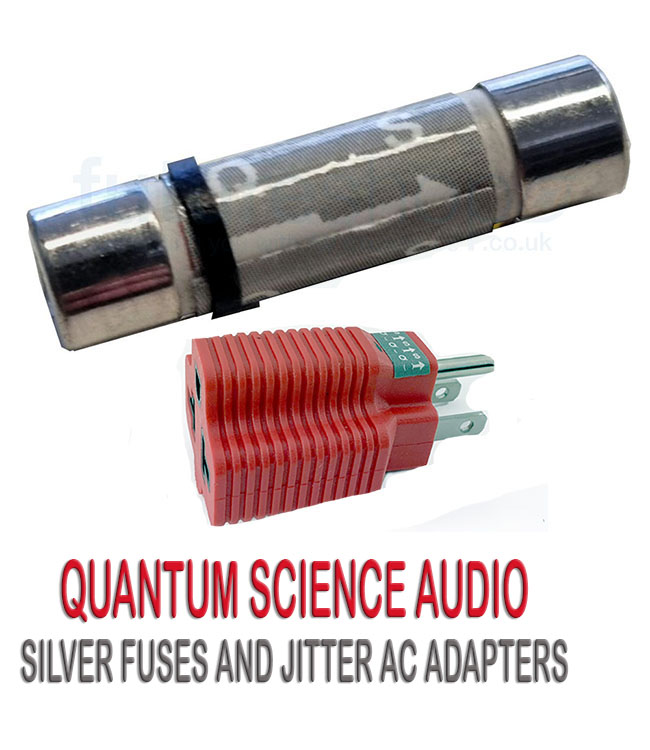
 It’s been two-plus years since I was first introduced to Quantum Science Audio fuse technology. I wrote at length about my experiences (here) and remained in awe at the sonic improvements these devices continue to bring to my audio world. Steven Yickman, who serves as the company’s designer and head honcho, has improved on the QSA technology and has recently introduced his newest reference: QSA’s Silver Series Jitter AC Adapter, which serves as the subject of this review.
It’s been two-plus years since I was first introduced to Quantum Science Audio fuse technology. I wrote at length about my experiences (here) and remained in awe at the sonic improvements these devices continue to bring to my audio world. Steven Yickman, who serves as the company’s designer and head honcho, has improved on the QSA technology and has recently introduced his newest reference: QSA’s Silver Series Jitter AC Adapter, which serves as the subject of this review.
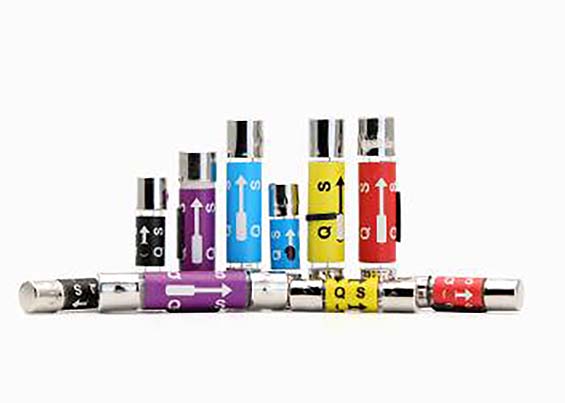
If I’m not mistaken, Yickman introduced me to his $213 Yellow series in early 2020. Since then, I have been fortunate to hear his top-level performers (Purple, Red, and Red/Black). I firmly believe there is a common sonic theme throughout the QSA lineup: freedom from noise and the extension of frequency extremes. The highs go higher with fewer artifacts, while the lows reach decibels you didn’t think possible from your system. QSA’s color-coded lineup increases both in price and performance. Although I started with the Yellow, the entry-level Black Fuse retails for only $28 and sounds worlds apart from ordinary stock fuses. However, when I started investing in the higher-priced models, I fully began to recognize the power behind the QSA technology.
Having lived with the Red/Black for over two years, I have concluded that they are the most significant tweek to have graced my listening space, bar none. No matter the sophistication or cost, if your beloved audio component houses a stock fuse, there’s no doubt in my mind it’s losing out on much of its potential. As a result, various aftermarket fuses have flooded the market, proving this to be a success. None has impacted my system like the QSA fuses.
 In fact, during the Pandemic, I have had no one to come over and validate my claims of how powerful these products were in my system. Over the 18 months, and with the lift in the Covid-19 restrictions, I’ve finally invited my friends back for a listening session. After extended sessions, All remained in awe of the improvements in soundstage depth and dimensionality, not to mention the musicality. The problem is that none can state with any certainty that these added sonic benefits have anything to do with the QSA technology. Too much time has passed between visits for anyone to make that claim. I understand how hard it must be to assess someone else’s setup (much less a system you’ve not heard of in over two years). I requested they give the Mike Garner of the Tweek Geek a call. His 30-day money-back guarantee is a no-brainer. These friends did, and in the end, were amazed at the QSA’s lower-priced offerings (Yellow and Purple models).
In fact, during the Pandemic, I have had no one to come over and validate my claims of how powerful these products were in my system. Over the 18 months, and with the lift in the Covid-19 restrictions, I’ve finally invited my friends back for a listening session. After extended sessions, All remained in awe of the improvements in soundstage depth and dimensionality, not to mention the musicality. The problem is that none can state with any certainty that these added sonic benefits have anything to do with the QSA technology. Too much time has passed between visits for anyone to make that claim. I understand how hard it must be to assess someone else’s setup (much less a system you’ve not heard of in over two years). I requested they give the Mike Garner of the Tweek Geek a call. His 30-day money-back guarantee is a no-brainer. These friends did, and in the end, were amazed at the QSA’s lower-priced offerings (Yellow and Purple models).
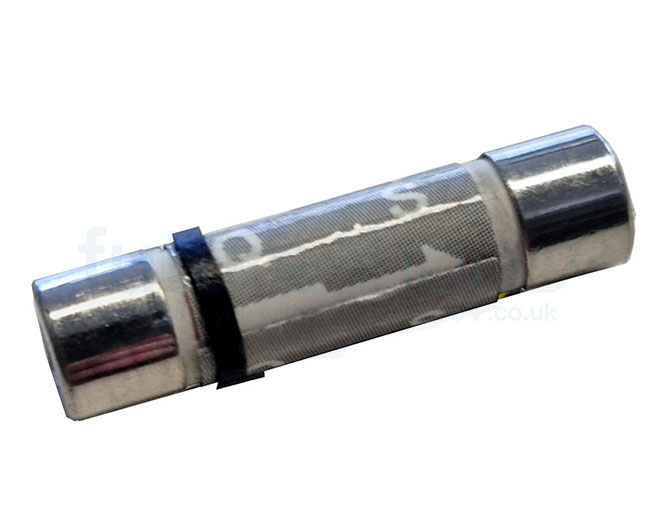
When Steven Yickman introduced his new Silver Series, I was not surprised by the $5k price because he had mentioned it many months before (he’s planning on releasing a $10k QSA Gold series Fuse available this year). However, I had my apprehensions about its performance. How could anything outperform the sonic excellence of the QSA Red/Black? What if Yickman has reached the peak of his QSA technology and is taking us on a ride? How do you improve over something that’s already so good? When is enough enough?
It was a risk not worth taking. That is until Yickman mentioned the Silver fuses were now available for review. How could I resist? My duty was to get to the bottom of this for potential purchasers.
Burn-in is ridiculously long with QSA Fuses. I would estimate 600 hours before the Red/Black settled in. Leaving your music on is an easy remedy if you’re using solid-state gear. But what do you do if you’re a tube lover? That’s a lot of tortuous hours not knowing if the system will sound heavenly or hellish. After 300 hours, things started to settle in terms of excellence, but I felt they still improved over the next 300 hundred hours.
Swapping out the new QSA (20 mm long 12A) Silver fuses versus the well-burned-in Red/Black left me in a quandary. On a certain level, I could tell almost immediately the Silver had an even greater sense of transparency, dimensionality, and detail than the Red/Black. However, the Red/Black was still more balanced, fluid, and natural sounding. I knew the Silver had to burn in first, but I needed to hear if there were any differences right out of the box.
I listened every day during the burn-in as if I enjoyed the torture. I did not. However, those little glimpses of promise started to show up after about 150 hours of constant burn-in. The overall fluidity and pace of the music got better and stayed longer. The music I knew so well started to sound slightly more dimensional and dynamically charged. The music sounded bright and etched on other songs from my Laufer Teknik Memory Player’s playlist. A sign I needed to let the system burn in still more.
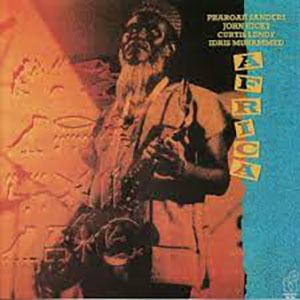 After 300 hours, the system became that much more musically pleasing, no matter the source or material. This was a good sign because I knew the burn-in was near complete. For example, Pharoah Sanders’ You’ve Got to Have freedom is a 1980 release from his “Journey to The One” album that is certainly not the finest jazz recording in my library. However, it is one of the most ferocious examples of musical virtuosity I have heard. Through the QSA Silver, I could detect – for the first time – communication between the great John Hicks on piano and the rest of his bandmates (Ray Drummond bass, Idris Muhammad drums, and Eddie Henderson trumpet). The fiery pace of this song is also quite stunning, but most apparent was this improved sense of harmonic fluidity: the ability to feel the rhythm and not just hear it. Through the QSA Silver, it was as though a window had opened into the recording studio, letting me closer to the actual recording. The incredible musicianship on these less-than-stellar 40-year-old catalogs has always been an issue. The QSA Silvers seems to alleviate the date-stamp inherent in many of these earlier recordings, leading me to believe these recordings are not always the culprit behind their old and dated sound.
After 300 hours, the system became that much more musically pleasing, no matter the source or material. This was a good sign because I knew the burn-in was near complete. For example, Pharoah Sanders’ You’ve Got to Have freedom is a 1980 release from his “Journey to The One” album that is certainly not the finest jazz recording in my library. However, it is one of the most ferocious examples of musical virtuosity I have heard. Through the QSA Silver, I could detect – for the first time – communication between the great John Hicks on piano and the rest of his bandmates (Ray Drummond bass, Idris Muhammad drums, and Eddie Henderson trumpet). The fiery pace of this song is also quite stunning, but most apparent was this improved sense of harmonic fluidity: the ability to feel the rhythm and not just hear it. Through the QSA Silver, it was as though a window had opened into the recording studio, letting me closer to the actual recording. The incredible musicianship on these less-than-stellar 40-year-old catalogs has always been an issue. The QSA Silvers seems to alleviate the date-stamp inherent in many of these earlier recordings, leading me to believe these recordings are not always the culprit behind their old and dated sound.
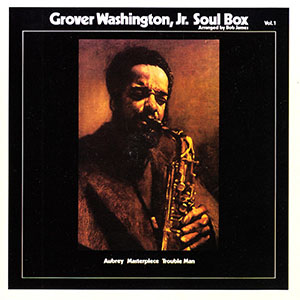 Big Band jazz never sounded this good, compliments of the QSA Silver fuses. Listening to Trouble Man by Grover Washington (from his Soul Box LP) allowed me to hear this 1973 recording in a way I could never have done before. This album, produced by Creed Taylor, employs great jazz artists like Ron Carter, Bob James, and Idris Muhammad and features an entire brass and woodwind section. What was most surprising wasn’t just the ability to hear the musicians so clearly, but the waves of musical depth and scale of this performance. Previously, Grover’s performance would be featured as the main attraction; then, the rest of the band would play along. One could detect a lot is going on here in this recording. The band did a great job supporting the main artist, but it was always about the artist, Grover Washington. Not so evident with the QSA Silver in place. Here you can hear the brass section come alive and swell out of the corners of my listening room while the woodwinds rose and lifted the band still higher. There are levels and levels of musical interpretation that take place here that I hardly knew existed. So much so that I played this song over and over in sheer delight that it was a far superior recording than I had initially believed.
Big Band jazz never sounded this good, compliments of the QSA Silver fuses. Listening to Trouble Man by Grover Washington (from his Soul Box LP) allowed me to hear this 1973 recording in a way I could never have done before. This album, produced by Creed Taylor, employs great jazz artists like Ron Carter, Bob James, and Idris Muhammad and features an entire brass and woodwind section. What was most surprising wasn’t just the ability to hear the musicians so clearly, but the waves of musical depth and scale of this performance. Previously, Grover’s performance would be featured as the main attraction; then, the rest of the band would play along. One could detect a lot is going on here in this recording. The band did a great job supporting the main artist, but it was always about the artist, Grover Washington. Not so evident with the QSA Silver in place. Here you can hear the brass section come alive and swell out of the corners of my listening room while the woodwinds rose and lifted the band still higher. There are levels and levels of musical interpretation that take place here that I hardly knew existed. So much so that I played this song over and over in sheer delight that it was a far superior recording than I had initially believed.
I mentioned that nearly 600 hours of burn-in is needed before the QSA fuses settle down and produce an astounding and consistently appreciative quality. The soundstage and dimensionality increased to the point where sometimes, depending on the song, the sound appeared to come from behind me. Sometimes I’m forced to rewind the song to the point where I hear an instrument sound as though it is behind me, and the illusion is diminished. Why? Maybe because I was looking for it again? Not sure. I am confident that the QSA Silver fuses impart such low levels of distortion, allowing you to not just hear into the music but play it back at higher volumes with little to no fatigue.
 As good as the QSA Red/Black is, and as much as I thought it would be impossible to improve upon its performance, the QSA Silver bettered it in obvious ways. Firstly, it’s quieter and allows you to hear the subtler notes hiding in between instruments. The QSA Silver sound is also more natural and dynamically charged, making the music reminiscent of the real thing. Unlike before, the bass isn’t just cleaner but more transparent, allowing one to hear into the music’s lower octaves. Hearing this quality of transparency while it remains harmonically intact is quite unusual for me. Formally, when anything became too transparent, it became too bright and devoid of harmonic weight and substance. With the QSA Silver, the opposite occurs. The music gains more PRaT and realism. As I wrote in my review two years ago: the Red/Black was so powerfully impactful that I felt the $2800 asking price was a bargain. The QSA Silver, in my opinion, is substantially better than even the mighty Red/Black, which was hard to believe until I tried going back to the Red/Black for A/B comparisons.
As good as the QSA Red/Black is, and as much as I thought it would be impossible to improve upon its performance, the QSA Silver bettered it in obvious ways. Firstly, it’s quieter and allows you to hear the subtler notes hiding in between instruments. The QSA Silver sound is also more natural and dynamically charged, making the music reminiscent of the real thing. Unlike before, the bass isn’t just cleaner but more transparent, allowing one to hear into the music’s lower octaves. Hearing this quality of transparency while it remains harmonically intact is quite unusual for me. Formally, when anything became too transparent, it became too bright and devoid of harmonic weight and substance. With the QSA Silver, the opposite occurs. The music gains more PRaT and realism. As I wrote in my review two years ago: the Red/Black was so powerfully impactful that I felt the $2800 asking price was a bargain. The QSA Silver, in my opinion, is substantially better than even the mighty Red/Black, which was hard to believe until I tried going back to the Red/Black for A/B comparisons.
Keep in mind QSA fuses are impressive sounding, starting with the $28.00 Black. However, the quality improves exponentially when you venture up to higher models like Purple, Red, Red/Black, and Silver. I’ll even further state that the further you go up, the greater the performance. As good as the Yellow performs, the Purple is better, but not that much. Ditto going from Purple to Red. You’ll hear the difference, but it’s not as big as going from Purple to Red/Black. Or, in my case, from Red/Black to Silver. It can take forever to appreciate it due to the incredibly long burn-in period.
That a QSA Silver fuse would cost $5,000 seems out of this world, and I’ll be the first to admit it; however, until you hear them in your system, hold your judgment. I’ve plenty of high-end cables, AC conditioners, AC cords, and even electronics that fail to sound as convincingly real as the QSA Silver series fuses. I stated the above a few years ago when comparing the QSA Red/Black. But suppose you have a system that can benefit from these unique devices and can afford it. In that case, I’m going to recommend that you buy as many as you need because they are fully capable of transforming one’s system even more than, say, an entire loom of $100k in cables. The QSA has provided this listener with a quality of performance that I cannot overstate. Until you audition them for yourself, you may only have a hint at how good your stereo system can perform. With the latest QSA Silver in-house, this product remains the finest tweek to have graced my listening space.
QSA Jitter AC Adapter
 When Steven Yickman contacted me about the newest creation in his AC Jitter Adapter, I thought, “now, this might be something special but why do you call it Jitter?” I don’t know if I can remember his answer or care to repeat it here. But what I felt was special is: for the first time, anyone that hasn’t experienced the QSA fuses for fear of potentially voiding their warranty and/or damaging their beloved component can now have the chance to experience what so many music lovers have been talking about. The other special thing worth noting is: the QSA Silver Jitter AC adapters are half the $5k asking price of the Silver series fuses!!
When Steven Yickman contacted me about the newest creation in his AC Jitter Adapter, I thought, “now, this might be something special but why do you call it Jitter?” I don’t know if I can remember his answer or care to repeat it here. But what I felt was special is: for the first time, anyone that hasn’t experienced the QSA fuses for fear of potentially voiding their warranty and/or damaging their beloved component can now have the chance to experience what so many music lovers have been talking about. The other special thing worth noting is: the QSA Silver Jitter AC adapters are half the $5k asking price of the Silver series fuses!!
These newest QSA Jitter AC Adapters went through the exact development Yickman applied to his products, but fortunately, these are the least invasive! Just plug them into your AC cord, and you’re done. One huge advantage of the QSA Silver Jitter AC adapters is they can impact any component that doesn’t have fuses!
In terms of physical appearance, the QSA Jitter AC Adapters resemble the same AC cheater plug found at your local hardware store. I know that the technology employed in Yickman’s secret sauce doesn’t affect the rubber that makes up 90% of these plugs. However, there’s quite a bit more metal on these plugs than on those tiny 20mm fuses.

Let us get one thing out of the way, I already have the Silver fuses in my amplifiers and preamp and did not remove them for this review. My comments reflect what the QSA Silver Jitter AC adapters did when I first applied them to my Puritan AC conditioner and Laufer Teknik Memory Player. I’ve described the sound of the Silver series fuses above, but to my amazement, I was shocked to find the same sonic attributes relating to the Silver Jitter AC adapters. There’s a more convincingly genuine and authentic tone of instruments and outlines accompanied by more depth, separation and transparency. The QSA Silver Jitter AC adapters have an uncanny sense of making everything sound more lifelike by creating better space and expanding the soundstage size without any exaggeration. Instruments panned to the far left or right of the soundstage sound more distant and detached (as in space) yet distinct. There’s more meat on the instruments, and the music has more flow and PRaT. Go figure. Image specificity is also improved upon with the addition of the QSA Silver Jitter AC adapters.
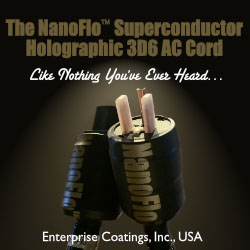 Once again, Grover Washington’s Trouble Man gained more harmonic weight but amazingly sounded lighter in terms of agility. Adding the QSA Silver Jitter AC adapters to components that did not have fuses only further convinced me of what level of improvements the fuses provided. If you like having your heart strings pulled, then give Winding Roads by Terrence Blanchard, from his 2009 release “Choices” a listen. This jazz-orchestral-styled performance features singer/songwriter Bilal and Dr. Cornell West providing spoken word on this 12-minute track. Once submerged into the depth of this excellently recorded song, you’d probably be convinced 12 minutes isn’t quite long enough. The overall effect of Blanchard’s ingenious composition here is nothing short of breathtaking via the QSA’s inception. Here’s a very complex piece that features Blanchard’s Octet that includes young up-and-coming musicians that are too numerous to name here. But they put on a masterclass of tempo, swing and substance. Not a moment is wasted here on this particular track. Thanks to the QSA Silver fuses and Jitter AC adapters, the music flows with such grace and beauty, I think I played it and entire evening. For me, this music speaks in way that is hard to describe.
Once again, Grover Washington’s Trouble Man gained more harmonic weight but amazingly sounded lighter in terms of agility. Adding the QSA Silver Jitter AC adapters to components that did not have fuses only further convinced me of what level of improvements the fuses provided. If you like having your heart strings pulled, then give Winding Roads by Terrence Blanchard, from his 2009 release “Choices” a listen. This jazz-orchestral-styled performance features singer/songwriter Bilal and Dr. Cornell West providing spoken word on this 12-minute track. Once submerged into the depth of this excellently recorded song, you’d probably be convinced 12 minutes isn’t quite long enough. The overall effect of Blanchard’s ingenious composition here is nothing short of breathtaking via the QSA’s inception. Here’s a very complex piece that features Blanchard’s Octet that includes young up-and-coming musicians that are too numerous to name here. But they put on a masterclass of tempo, swing and substance. Not a moment is wasted here on this particular track. Thanks to the QSA Silver fuses and Jitter AC adapters, the music flows with such grace and beauty, I think I played it and entire evening. For me, this music speaks in way that is hard to describe.
Adding the QSA Silver Jitter adapters onto the might Behold BPA-768 amplifiers and preamp, where the QSA fuses have been well-burned-in, only further confirmed my findings that YES, the QSA products are the real deal. Super expensive but worth every penny if you choose to keep your electronics in place but want to improve their respective performance. To think Steven Yickman, QSA’s designer, will be releasing yet another Gold level to his already growing arsenal of products is intimidating enough. The cost, however, is something most of us can only dream of hearing. This writer considers himself very fortunate to have had the honor to be the first to report on this product. I didn’t need anyone to convince me of what I knew almost immediately: that the QSA still exists as the single greatest accessory I know of.
The addition of the QSA Silver Jitter AC adapters throughout my system only improved the harmonic integrity, bass performance, treble extension, and overall brilliance. Its ability to leave this listener spellbound is its greatest attribute. Without question, my system has reached new musical heights I could have never believed possible until I heard it for myself. I highly recommended the QSA Silver Jitter AC adapters and nominated them as Publisher’s Choice 2022 Most Wanted Component!


clement perry
Specifications:
QSA Silver Fuse $5,000 each
QSA Silver Jitter AC Adapter $2,500 each
USA distributor: Tweek Geek
Website: https://www.tweekgeek.com
Stereo Times Masthead
Publisher/Founder
Clement Perry
Editor
Dave Thomas
Senior Editors
Frank Alles, Mike Girardi, Key Kim, Russell Lichter, Terry London, Moreno Mitchell, Paul Szabady, Bill Wells, Mike Wright, Stephen Yan, and Rob Dockery
Current Contributors
David Abramson, Tim Barrall, Dave Allison, Ron Cook, Lewis Dardick, Dan Secula, Don Shaulis, Greg Simmons, Eric Teh, Greg Voth, Richard Willie, Ed Van Winkle, and Rob Dockery
Music Reviewers:
Carlos Sanchez, John Jonczyk, John Sprung and Russell Lichter
Site Management Clement Perry
Ad Designer: Martin Perry




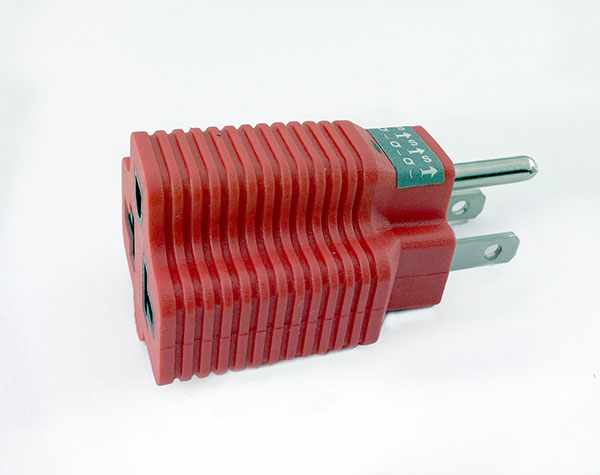



Be the first to comment on: QSA Silver Fuse and Silver Jitter AC adapter by Clement Perry